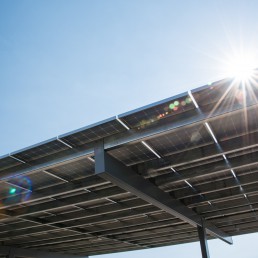“`

Solar and Storage procurement doesn’t have to be complicated. Tune into our June 12th webinar hosted by CASBO to learn how.
In California, renewable energy and efficiency projects have become the new normal for schools. State mandates have increasingly made energy related projects a priority for districts, while federal and state incentive programs such as the Federal Investment Tax Credit (ITC) and Proposition 39 are making projects more accessible and affordable. While the goal in California towards reducing carbon emissions through zero net energy facilities is clear, the path to doing so, especially for public agencies, is not. Public schools in California have been approached with myriad of options over the last decade; not all of which are created equally in terms of benefits, methodologies, and timing. However, with a limited time stamp on incentives and changes in utility rate structures, the timing has never been more important. Luckily there is a simplified approach to solar and storage procurement, which this article and proceeding webinar will cover.
The Status Quo
There are many ways to approach renewable energy procurement. Hiring consultants, self-managing RFPs, or raising bond money to buy systems are common options, yet require an enormous amount of time, funding, and resources. Solar procurement can be a long, expensive processes that can result in frustration, sub-par bid results, and dead ends. With so many different options on the market it can be hard to get a project from concept to construction. Many vendors today offer “bundled savings” that sounds appealing, but in reality, are very unclear as to what exactly is being saved and often start to lessen over time. It’s important for districts to be crystal clear on what they’re agreeing to, especially with multi-year contract terms.
A Simplified Approach
Given all these factors, one organization set out to simplify the solar procurement process and bring more transparency to the market. Meet School Project for Utility Rate Reduction, or SPURR, a joint powers authority dedicated to helping the California public sector control and reduce utility expenses. SPURR’s aggregated buying power and expertise helps public agencies secure the best pricing and terms for everything from solar and energy storage procurement to telecommunications services. Founded in 1989, SPURR was created to aggregate the buying power of public schools to help schools get the best best deals in the market, avoid high consulting fees, and negotiate complicated contracts.
SPURR’s Renewable Energy Aggregate Procurement (REAP) program, leverages the collective purchasing power of the SPURR member network to secure pre-negotiated pricing and terms secured through their statewide RFP process; eliminating the need for member districts to run their own costly and lengthy RFPs. The result: a streamlined RFP process with no-upfront costs or use of bond money, including pre-negotiated 20-year Power Purchase Agreement (PPA) rates and standardized contract terms. With over 60 MW of solar and battery storage across hundreds of sites in California, the REAP Program is helping school districts accelerate and optimize the solar and storage procurement process while market conditions are still favorable.
Timing is Everything
Energy policy in California has seen a lot of transition over recent years. Changes in the utility system, namely rising energy costs, are of large concern to those officials trying to maintain operational expenses. Already we’ve seen both Time of Use (TOU) rates and Net Energy Metering (NEM) phase from 1.0 to 2.0, making conditions less favorable for consumers. With NEM 3.0 on the horizon, it’s now more important than ever to get solar and storage systems in place so that districts can lock in the lowest utility rates while they are still available.
The Federal Investment Tax Credits (ITC) offer another source of savings that are commonly overlooked by districts. Currently the ITC provides a 30% discount off the sticker price of a project- a major benefit of purchasing a system. However, when districts enter into a (Power Purchase Agreement) PPA with a developer such as ForeFront Power, they can still benefit from those savings without having to buy the system, as those savings are translated to the district in the form of a lower PPA rate. Like most incentives, however, the ITC is reducing. Currently valued at 30% the ITC is scheduled to step down after 2019. For more information on how the ITC works, check out this article.
For those districts that want to take full advantage of the savings that solar offers, now is the time to act. Luckily, associations such as SPURR exist that help districts run vendor RFPs quickly and cost-effectively. Member districts can leverage SPURR’s highly competitive RFP process, along with its standard pricing, terms, and conditions, to get the best deals in the market – and quickly.

Interested in learning more?
We would love to discuss how our solutions might be a fit for your organization. Contact one of our solar, storage, or e-mobility experts today:




